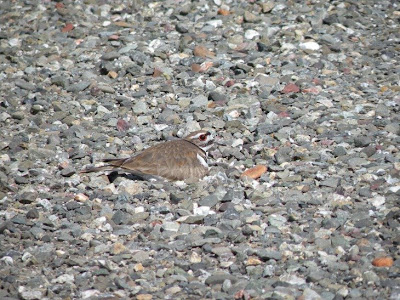
It's that time of year at Kokopelli Wildlife Area. The time when we drawdown our seasonal wetland cells to grow the moist soil plants to feed next year's migratory waterfowl. By drawing down during this time of year, we tend to germinate our most desired waterfowl food plants-- primarily smartweeds and watergrass. You can see extensive mudflats in these photos. The mudflats are areas that we disked last summer in order to keep the vegetative communities at an early successional stage.

By drawing the water down gradually, we concentrate the invertebrates that have been multiplying all year long, creating ideal feeding conditions breeding waterfowl and for migrating shorebirds like these:
long billed dowitcher

western sandpiper

killde--wait! that's not a killdeer
semi-palmated plover
(notice only a single breastband and a white forehead--also much smaller)

blacknecked stilt
 We also concentrate larger prey items such as fish and crayfish to help feed other species like these:
We also concentrate larger prey items such as fish and crayfish to help feed other species like these:American white pelican
notice the plate on the bill which only grows during breeding season
 This next bird is a fairly uncommon visitor to Kokopelli WA and it reminds me of fishing from a boat on Lake Sabrina with my father and brother. I used to have a lot of fun watching them dive and then trying to predict where they would pop back up.
This next bird is a fairly uncommon visitor to Kokopelli WA and it reminds me of fishing from a boat on Lake Sabrina with my father and brother. I used to have a lot of fun watching them dive and then trying to predict where they would pop back up.western grebe
 We also have a large heron, egret and cormorant rookery. Right now they are trying to feed their young and the steady supply of easy pickings during drawdown helps them out quite a bit.
We also have a large heron, egret and cormorant rookery. Right now they are trying to feed their young and the steady supply of easy pickings during drawdown helps them out quite a bit.I only was out of the truck for about an hour, but when I got back, I felt one of these near my boots. I found another one later in my office and I still feel about a hundred phantom(?) ticks crawling all over me.

 Order: Charadriiformes
Order: Charadriiformes Additionally, their eggs are spotted and streaked in order to blend in with the surrounding rocks. The killdeer places these eggs in a carefully scraped out nest. On gravel roads, they are often lined with small, white pieces of quartz.
Additionally, their eggs are spotted and streaked in order to blend in with the surrounding rocks. The killdeer places these eggs in a carefully scraped out nest. On gravel roads, they are often lined with small, white pieces of quartz.
 While sitting at the nest, or when protecting young, the parent exhibits a distraction technique to lure predators away from the nest when disturbed. They put on a very believable (and noisy) broken wing distraction dispaly worthy of an award from the Academy.
While sitting at the nest, or when protecting young, the parent exhibits a distraction technique to lure predators away from the nest when disturbed. They put on a very believable (and noisy) broken wing distraction dispaly worthy of an award from the Academy.

